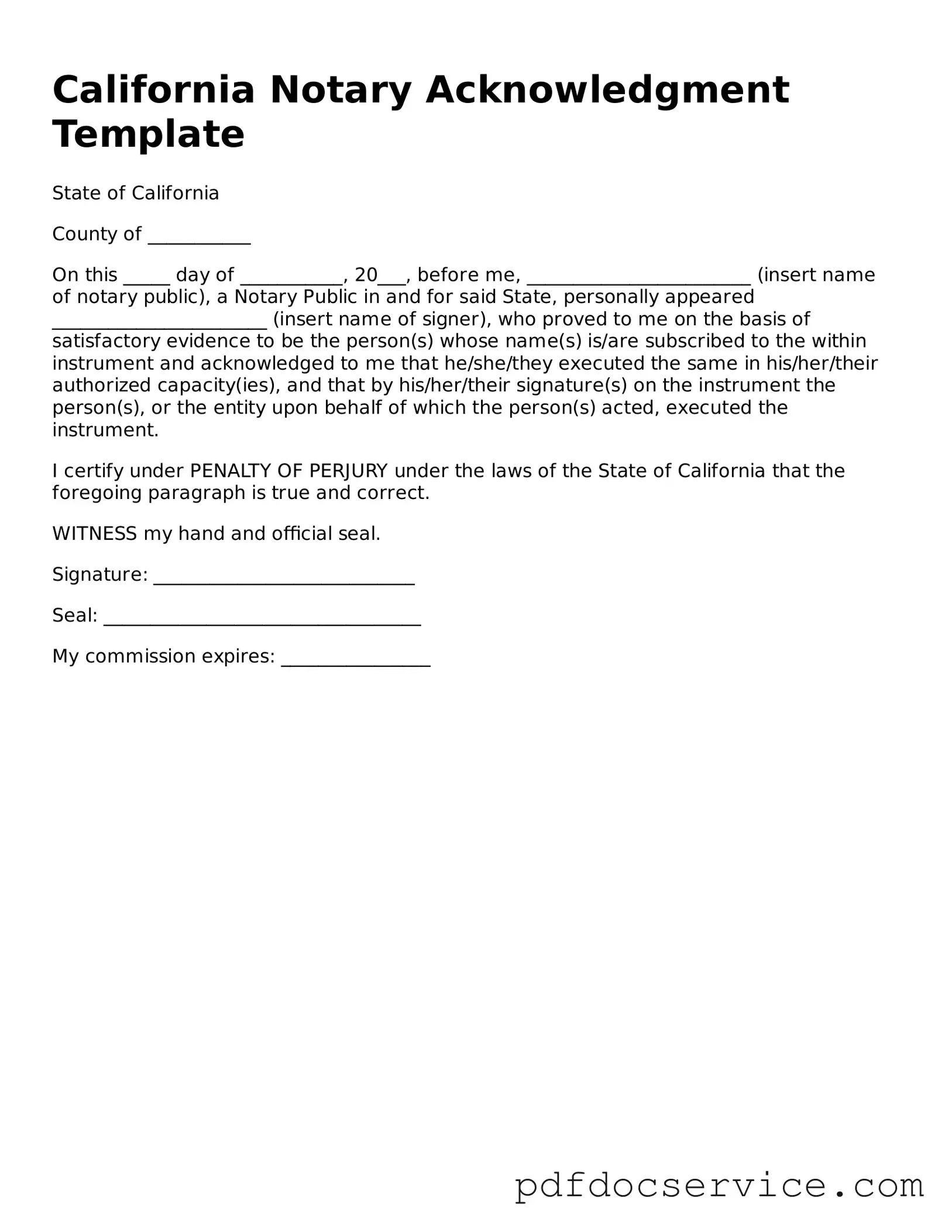A California Notary Acknowledgment form is a legal document used to verify the identity of individuals signing a document. It serves as proof that the signer has appeared before a notary public and has acknowledged their signature on the document. This form is commonly used in various transactions, including real estate deals, legal agreements, and other official documents requiring notarization.
In California, a notary public must be commissioned by the state to perform notarial acts, including acknowledgments. Notaries are trained professionals who have completed the necessary education and passed a background check. They are responsible for ensuring that the signer is who they claim to be and that they are signing willingly.
The California Notary Acknowledgment form requires specific information, including:
-
The name of the person signing the document.
-
The title of the document being signed.
-
The date the acknowledgment is performed.
-
The signature of the notary public.
-
The notary's seal, which must be affixed to the form.
Additionally, the form may include space for the signer's address and the notary's commission details.
While the terms are often used interchangeably, a Notary Acknowledgment is a specific type of notarization. Notarization can encompass various acts, including oaths and affirmations, while an acknowledgment specifically confirms that the signer has willingly signed the document in the presence of a notary.
A Notary Acknowledgment form is typically required in situations where a document needs to be legally recognized. This includes:
-
Real estate transactions, such as deeds and mortgages.
-
Legal documents like powers of attorney and wills.
-
Contracts that require notarization for validity.
It is advisable to check the requirements of the specific transaction to determine if a notary acknowledgment is necessary.
Can a Notary Acknowledgment be completed remotely?
California allows remote online notarization under certain conditions. A notary public may perform an acknowledgment using audio-visual technology, provided they follow the guidelines set forth by the state. This option is particularly useful for individuals who cannot meet in person due to distance or other circumstances.
What should I do if I need a Notary Acknowledgment but cannot find a notary?
If locating a notary public proves challenging, consider the following options:
-
Search online for notary services in your area.
-
Visit local banks, law offices, or shipping centers, as they often provide notary services.
-
Utilize mobile notary services that can come to your location.
It is important to schedule an appointment and confirm that the notary can provide the necessary services for your specific document.
